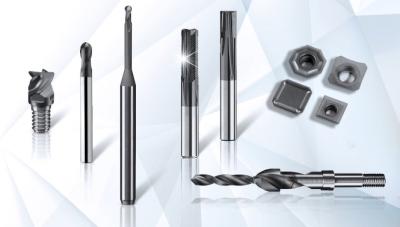
Oerlikon Balzers, a leading provider of surface solutions, has introduced its new BALDIA portfolio of diamond coatings. Diamond provides special properties: it is extremely wear-resistant due to its unsurpassed hardness, offers thermal conductivity and is chemically inert, making it the best choice for machining highly abrasive materials. The diamond coatings from the BALDIA portfolio improve cutting performance and allow parts to be manufactured with tightest tolerances for the best possible finishing accuracy.
The new diamond coating portfolio covers the entire spectrum of demanding machining applications and is divided into two groups of different base materials. The first contains coatings for machining highly abrasive compacted and sintered powders like graphite for moulds and dies, as well as ceramics for dental applications. For these applications, the BALDIA COMPACT and BALDIA COMPACT DC coatings produce the best possible machining performance. The second group of base materials are fibre-reinforced plastics, stack materials and highly abrasive aluminium alloys used in the aerospace and automotive industries. For this group, BALDIA NANO and BALDIA COMPOSITE DC are the right choice. In both groups the ending “DC” stands for maximum coating quality with consistently high tool performance and the tightest possible tolerances for tool diameter and coating thickness.
Wolfgang Kalss, Head of Cutting Tools at Oerlikon Balzers, says: “The acquisition of D-Coat last year gave us the opportunity to create the best solutions by pooling our synergies and bundling our expertise. The result is the new BALDIA portfolio, which is tailored to the specific needs of today’s most demanding markets. Our new BALDIA portfolio allows our customers to machine highly challenging special materials economically and to increase the service life of their cutting tools.”
Contact Details
Related Glossary Terms
- abrasive
abrasive
Substance used for grinding, honing, lapping, superfinishing and polishing. Examples include garnet, emery, corundum, silicon carbide, cubic boron nitride and diamond in various grit sizes.
- alloys
alloys
Substances having metallic properties and being composed of two or more chemical elements of which at least one is a metal.
- ceramics
ceramics
Cutting tool materials based on aluminum oxide and silicon nitride. Ceramic tools can withstand higher cutting speeds than cemented carbide tools when machining hardened steels, cast irons and high-temperature alloys.
- hardness
hardness
Hardness is a measure of the resistance of a material to surface indentation or abrasion. There is no absolute scale for hardness. In order to express hardness quantitatively, each type of test has its own scale, which defines hardness. Indentation hardness obtained through static methods is measured by Brinell, Rockwell, Vickers and Knoop tests. Hardness without indentation is measured by a dynamic method, known as the Scleroscope test.

